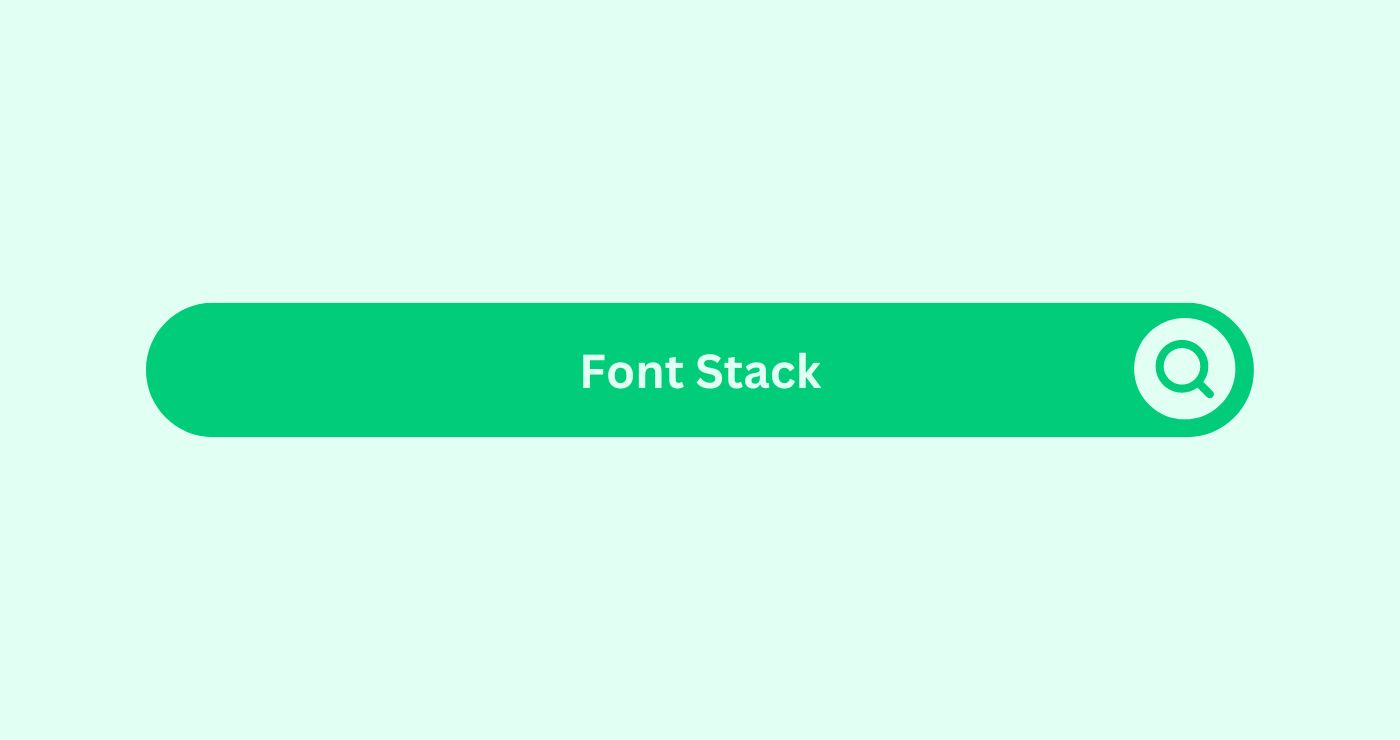Definition
A font stack in web development and SEO refers to a prioritized list of fonts specified in CSS that a web browserDefinition A browser is a software application used to acces... should use to display text on a webpage. This list typically includes multiple fonts to ensure that if the preferred font is unavailable, the browserDefinition A browser is a software application used to acces... can fall back to the next available font in the stack. Font stacks are crucial for maintaining consistent typography and the user experience across different devices and browsers.
Font stacks improve the accessibilityDefinition Accessibility refers to the design and developmen... and visual appeal of a website, directly impacting the user experience and engagementDefinition Engagement in content marketing refers to the deg.... They help ensure that text remains readable even if the primary font fails to load, thus reducing bounce rates and supporting better SEO performance. By specifying multiple fonts, web developers can create a more reliable and aesthetically pleasing website that adapts to various operating systems and user preferences.
How You Can Use
Using font stacks effectively involves specifying a series of fonts in your CSS to ensure optimal text renderingDefinition Rendering, in the context of SEO. refers to the p... across different platforms and devices. Here’s how you can implement and use font stacks to enhance your website’s performance and SEO.
Example:
Suppose you want to use the custom font “Open Sans” on your website but want to ensure that if “Open Sans” is unavailable, the text remains readable with alternative fonts. You can define a font stack in your CSS as follows:
cssCopy codebody {
font-family: 'Open Sans', Arial, sans-serif;
}
In this example, the browserDefinition A browser is a software application used to acces... will first attempt to use “Open Sans.”. If “Open Sans” is not available, it will fall back to “Arial.”. If neither “Open Sans” nor “Arial” are available, the browserDefinition A browser is a software application used to acces... will use the default sans-serif font. This ensures that the text is always displayed in a legible and aesthetically pleasing manner, regardless of the user’s device or browserDefinition A browser is a software application used to acces....
Formulas and Calculations
Font stacks do not involve mathematical formulas but rather the logical structuring of font preferences. However, understanding the hierarchy and prioritization of font stacks is essential
- Primary Font: The preferred font for the website, usually a custom or web font.
- Secondary Font: A widely available system font that serves as a fallbackDefinition A Fallback in the SEO space refers to a backup op... if the primary font is unavailable.
- Generic Font Family: A general font category (e.g., sans-serif, serif) to ensure text readability if all specified fonts fail to load.
Example:
cssCopy codep {
font-family: 'Roboto', 'Helvetica Neue', Arial, sans-serif;
}
In this example, “Roboto” is the primary font. If “Roboto” is unavailable, “Helvetica Neue” is used. If neither is available, the browserDefinition A browser is a software application used to acces... will use “Arial,” and as a last resort, it will use the default sans-serif font.
Key Takeaways
- Consistency: Font stacks ensure consistent typography across different browsers and devices.
- Readability: They maintain text readability even if the primary font fails to load.
- User Experience: Properly implemented font stacks enhance the user experience, reducing bounce rates.
- SEO Impact: Improved user experience and readability contribute positively to SEO.
- Flexibility: Font stacks allow for graceful degradation, ensuring that text is always displayed in a legible manner.
FAQs
What is a Font Stack?
A font stack is a prioritized list of fonts specified in CSS to ensure that if the preferred font is unavailable, the browserDefinition A browser is a software application used to acces... can fall back to the next available font.
Why are Font Stacks important for SEO?
Font stacks improve readability and user experience, which are important factors for SEO as they reduce bounce rates and increase user engagementDefinition Engagement in content marketing refers to the deg....
How do I create a Font Stack in CSS?
You can create a font stack by listing multiple fonts in the font-family property in CSS, separated by commas.
What happens if all specified fonts in a Font Stack are unavailable?
If all specified fonts are unavailable, the browserDefinition A browser is a software application used to acces... will use a default generic font specified at the end of the stack (e.g., sans-serif).
Can Font Stacks include web fonts and system fonts?
Yes, Font Stacks can include both web fontsDefinition Web fonts play a key role in modern web design as... (e.g., Google Fonts) and system fonts (e.g., Arial, Times New Roman).
How do Font Stacks enhance user experience?
Font stacks ensure text remains readable and visually consistent across different devices and browsers, enhancing the overall user experience.
What is a generic font family in a Font Stack?
It’s recommended to include at least three fonts: a primary font, a secondary fallbackDefinition A Fallback in the SEO space refers to a backup op... font, and a generic font family.
How many fonts should I include in a Font Stack?
It’s recommended to include at least three fonts: a primary font, a secondary fallbackDefinition A Fallback in the SEO space refers to a backup op... font, and a generic font family.
Can I use custom fonts in a Font Stack?
Yes, you can use custom fonts in a font stack by including the font file or linking to a web font service.
How do Font Stacks affect website performance?
Font Stacks can improve performance by ensuring that text is displayed quickly and correctly, even if the primary font fails to load.




